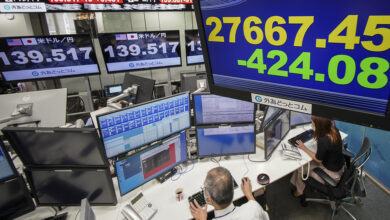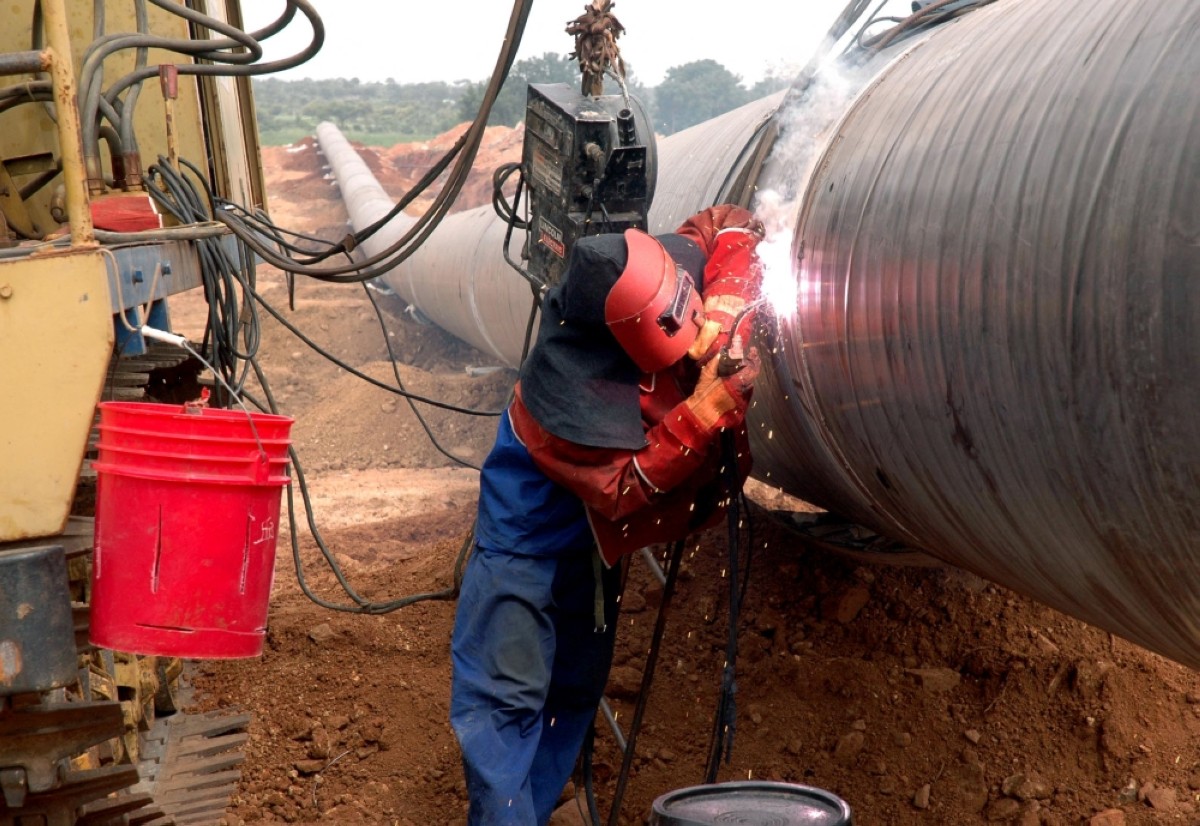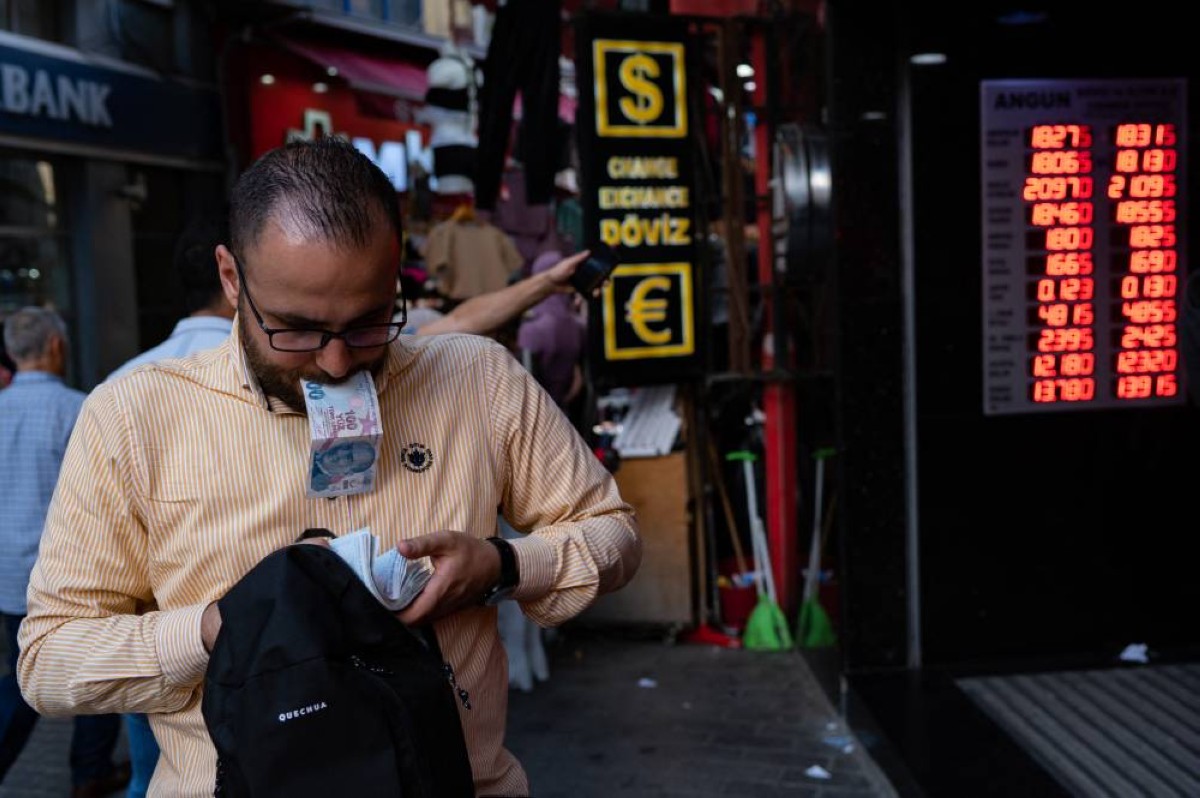Oil prices continue to decline amid global recession fears
LONDON: Oil prices continued to slide on Thursday on demand concerns as China, the world’s second-largest economy and the top importer of fuel, went on enforcing strict COVID-19 related restrictions amid an increase in the number of infections in the country.

TOKYO, Japan: An electronic quotation board displays the share price of the Tokyo Stock Exchange (top right) at a foreign exchange brokerage in Tokyo on September 1, 2022. – AFP.
Meanwhile, global stock markets sank Thursday, propelled by rampant inflation and growing recession fears. Frankfurt, London and Paris equities each slid about 1.5 percent. That followed losses across Asia as investors braced for more interest rate hikes, which seek to quell runaway inflation yet could derail economic activity.
Brent was trading 1.79 per cent lower at $93.93 a barrel at 12.32pm Kuwait Time on Thursday. West Texas Intermediate, the gauge that tracks US crude, was down 1.70 per cent at $88.03 a barrel.
Traders will be closely watching next week’s OPEC+ meeting after Saudi Energy Minister Prince Abdulaziz bin Salman said last week that the group, consisting of the world’s top producers, would cut production if required to counter the volatility in oil prices. Soft demand is likely to encounter tighter supply, and this means that in the coming days, oil prices are likely to climb with the new norm between $90 and $100, he said.
Recession fears are also growing around the globe amid higher inflation, the pandemic and the Ukraine conflict. The International Monetary Fund lowered its growth forecast for the global economy to 3.2 per cent this year, from its previous projection of 3.6 per cent in April, owing to the Ukraine war and the slowdown in China.
The OPEC+ alliance of 23 producers, including Saudi Arabia and Russia, will meet on September 5 to decide on its future output policy. Oil prices have been extremely volatile this year. Brent rose by more than 20 per cent since the start of the year, having fallen from a 14-year high when it was within touching distance of $140 a barrel in March after Moscow’s invasion in Ukraine began, resulting in sanctions being imposed by the US and the UK on crude imports from Russia.
Europe’s stocks also fell Wednesday as record-high eurozone inflation fuelled fears that borrowing costs are set to climb even higher, as the region faces rocketing winter energy costs due to Russia’s war on Ukraine. The European Central Bank will announce its latest monetary policy decision next Thursday, after delivering its first rate hike in a decade in July.
“Markets remain unable to snap their recent losing streak, with investors still positioning for tougher times ahead,” said Interactive Investor analyst Richard Hunter. “Central to current concerns are recessionary fears in the US and a beleaguered China. “With the world’s two largest economies under pressure, the immediate outlook is poor.”
Asian equities weakened further Thursday as traders continued to digest shrinking factory activity in powerhouse economy China. Shanghai also dropped after news that the Chinese city of Chengdu would effectively lock down around 16 million people in a bid to contain a COVID-19 outbreak, likely dealing another blow to a stuttering economy. Wall Street slid Wednesday as Treasury yields — a key gauge of future interest rates — rose further, as a broadly healthy report on US private jobs showed there was room for the Federal Reserve to continue tightening monetary policy.
Another top Fed official signaled the bank was determined to keep lifting borrowing costs, mirroring recent comments by the US central bank’s head Jerome Powell that there would be no let-up in the fight against inflation. US interest rates are currently at 2.25-2.5 percent, and there is a growing expectation they will be hiked by a bumper 75 basis points for a third successive meeting later this month. A government jobs report Friday will be closely watched by traders hoping for an idea about the next move by the bank. The prospect of more US rate hikes continued to push the dollar higher, with 140 yen within reach for the first time since 1998. The greenback was also at its strongest level against the pound since the height of the pandemic in 2020, with sterling buying less than $1.16. – AFP.











